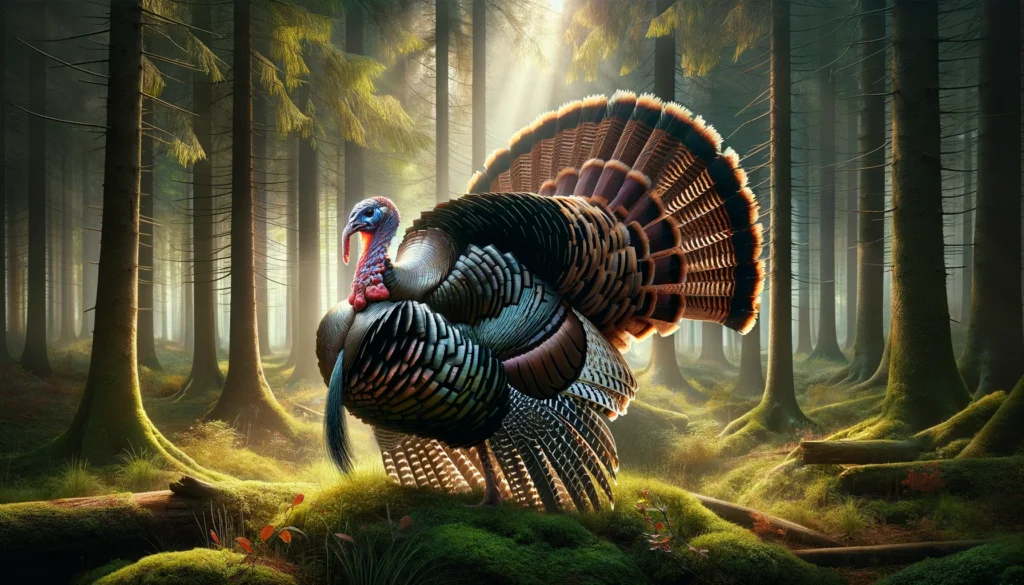A Closer Look at the Wild Turkey: An Icon of North American Wilderness

Table of Contents
Introduction
The wild turkey (Meleagris gallopavo) is more than just a symbol of Thanksgiving. This magnificent bird is an icon of the North American wilderness, showcasing the rich biodiversity and ecological complexity of the continent. With its impressive size, vibrant plumage, and unique behaviors, the wild turkey captures the imagination of birdwatchers, hunters, and nature enthusiasts alike. This article delves into the fascinating world of the wild turkey, exploring its habits, habitat, and the pivotal role it plays in ecosystem balance and cultural heritage.
Biology and Behavior
Physical Characteristics
Wild turkeys are among the largest birds in the open forests of North America. Males, known as toms or gobblers, can weigh up to 24 pounds and stand 4 feet tall, with females (hens) slightly smaller. Their plumage is iridescent, featuring shades of bronze, gold, and green, which serve as camouflage in their natural habitat.
Vocalizations and Mating Rituals
The gobble of a wild turkey, a sound that can carry up to a mile away, is a hallmark of the spring mating season. Males display their vibrant tail feathers in a fan and puff up their bodies to attract females, performing dances and emitting a variety of calls. Hens lay 10-12 eggs, which they incubate for about 28 days.
Habitat and Range
Wild turkeys thrive in mixed hardwood and pine forests with clearings, meadows, and edges that provide both cover and open ground. Their range extends across most of North America, from the central and eastern U.S. across to parts of Mexico and into Canada. Conservation efforts in the 20th century have significantly expanded their populations and range.
Diet and Foraging Behavior
Turkeys are omnivores, feeding on a wide range of foods. Their diet includes acorns and nuts, seeds, fruits, insects, and small reptiles. Their foraging behavior, scratching the leaf litter and ground for food, plays a crucial role in seed dispersal and the control of insect populations, highlighting their importance in maintaining healthy forests.
Conservation Status and Management
Thanks to concerted conservation and reintroduction efforts, the wild turkey population has rebounded from near extinction in the early 20th century to over 7 million birds today. Management strategies focus on habitat preservation, sustainable hunting practices, and research to ensure the continued success of this species.
Cultural Significance
The wild turkey holds a place of honor in American culture and history. Benjamin Franklin famously preferred the turkey over the bald eagle as the national bird, citing its native status and impressive appearance. Today, the wild turkey symbolizes wilderness conservation success and is celebrated in hunting traditions and wildlife art.
Conclusion
The wild turkey is a testament to the resilience of wildlife and the success of conservation efforts. By understanding and appreciating these creatures, we celebrate the beauty and complexity of the natural world. The story of the wild turkey is a reminder of our responsibility to protect and preserve the diverse ecosystems that are home to such remarkable species.
Frequently Asked Questions (FAQs)
1. Are wild turkeys aggressive?
Wild turkeys are generally not aggressive towards humans but can display aggression during the mating season to assert dominance.
2. Can wild turkeys fly?
Yes, despite their size, wild turkeys are strong fliers over short distances, especially when escaping predators or roosting.
3. How long do wild turkeys live?
In the wild, turkeys can live up to 10 years, though many fall prey to predators or hunting before reaching old age.
4. What is the difference between a wild turkey and a domestic turkey?
Wild turkeys are more slender, with darker plumage and a stronger flight capability compared to domestic turkeys, which are bred for size and meat production.
5. How can I help protect wild turkeys?
Supporting wildlife conservation organizations, advocating for the preservation of natural habitats, and practicing responsible hunting are effective ways to contribute to the protection of wild turkeys.
The wild turkey, with its rich history and ecological importance, continues to be a symbol of the American wilderness and a testament to the success of wildlife conservation efforts across North America.







